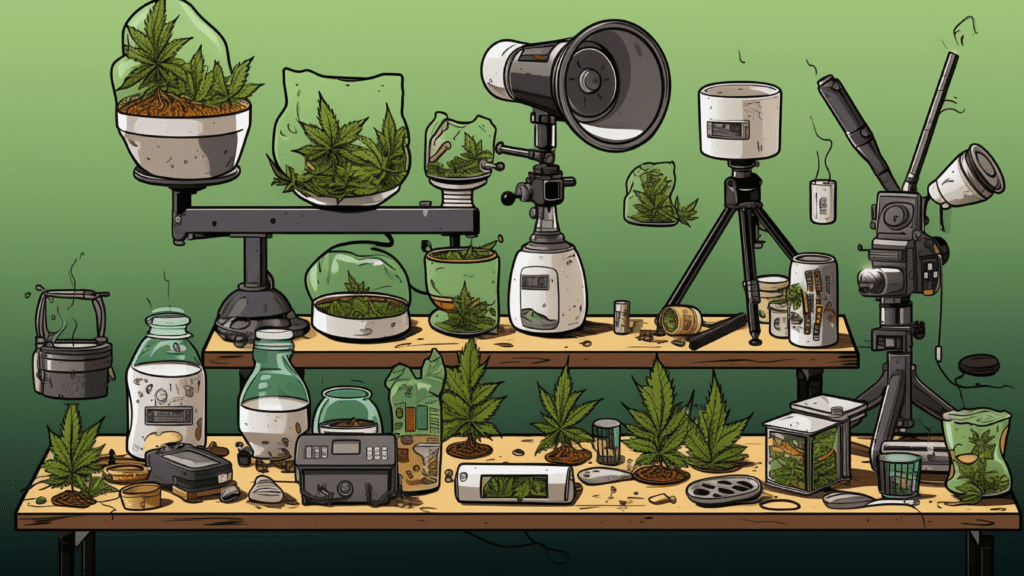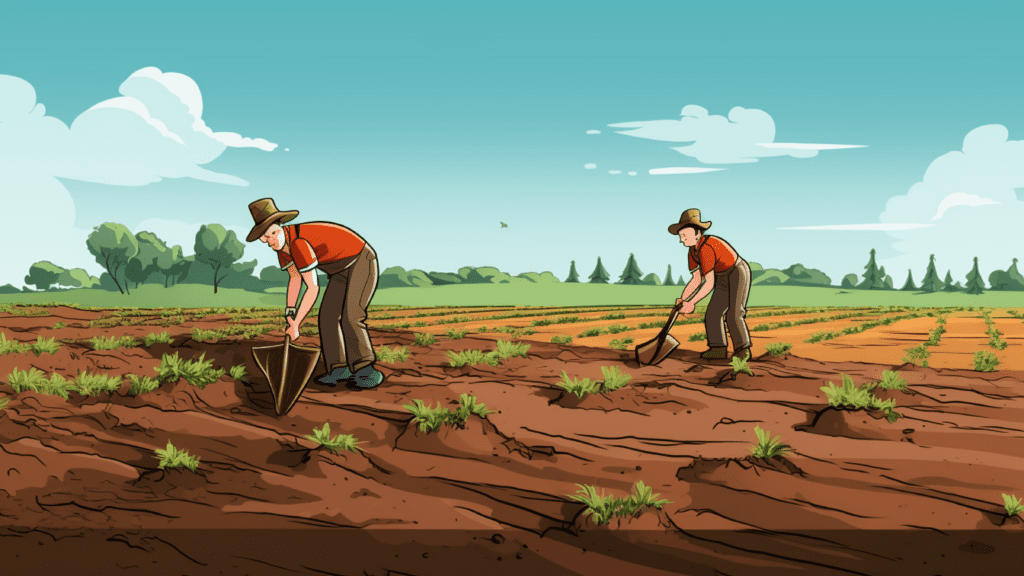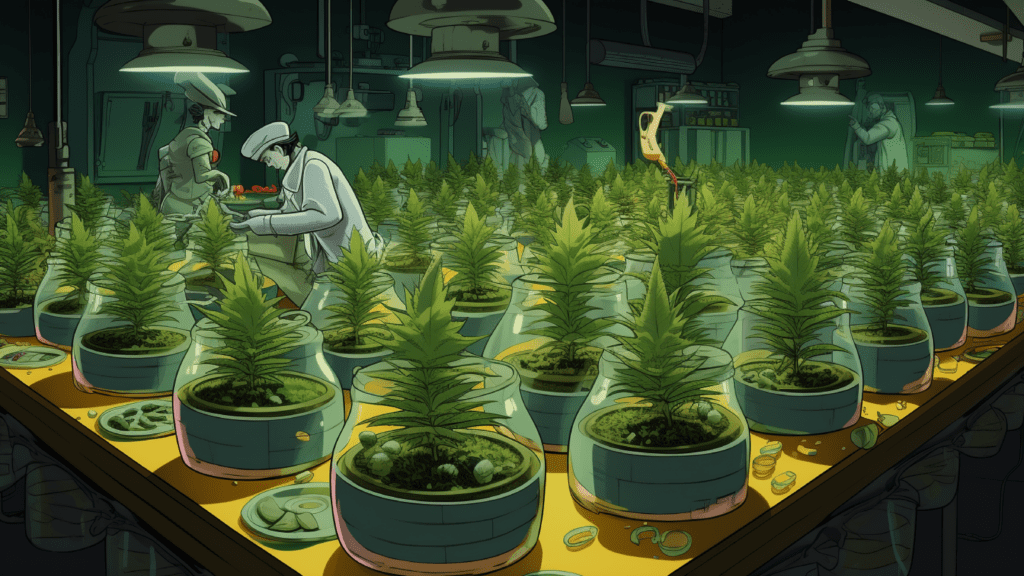Standard for cultivating and harvesting medical cannabis plants
GAPC standards are mandatory if one wants one crop to qualify. This is coming to Thailand. And soon. As regulations push Thai cannabis in an exclusively medical direction, GAPC standards will become the norm. What are they?
Live webinar happening tomorrow, Oct 31, at 02:00 PM in Bangkok. Click here to register on Zoom.
Town Hall of Cannabox is featuring the English translation of the GAPC standards in their entirety, along with a foreword and introduction by the translator, Shivek Sachdev. Shivek is the CEO of Cantrak, a track-and-trace software company serving the Thai cannabis industry, and recently published the ultimate guide, ‘the art of traceability‘.
Foreword
I am excited to introduce this English translation of the Thai Good Agricultural and Collection Practices (Thai GACP) Standard for the cultivation and harvesting of medical cannabis plants. As the founder of Cantrak, a pioneer in providing tailored solutions for the cannabis industry, I want to convey my enthusiastic support for this important initiative.
The Thai Cannabis Industry’s Potential
Thailand’s journey to becoming a leading hub for medical cannabis production and innovation is truly inspiring. As the Thai cannabis industry takes shape, embracing the Thai GACP framework is a crucial step forward.
I wholeheartedly encourage all Thai cannabis growers to enthusiastically adopt the Thai GACP framework. This framework represents a significant stride toward ensuring the quality, safety, and consistency of medical cannabis production. By embracing these standards, we not only demonstrate our commitment to providing high-quality products to consumers but also position Thailand as a global leader in medical cannabis cultivation.
Assuring Quality and Meeting Standards
The adoption of the Thai GACP framework is not just a regulatory requirement; it is an opportunity to excel. It is a pledge to prioritize the well-being of patients who rely on medical cannabis for their health and quality of life. It is a promise to uphold industry standards and best practices that will drive innovation and growth.
In this rapidly evolving industry, standardization is the cornerstone of success. It ensures that our products consistently meet the highest quality and safety standards, which is crucial for building trust among patients, healthcare professionals, and regulators.
A Collective Responsibility
As the founder of Cantrak, I understand the importance of collaboration and shared responsibility within the cannabis industry. By working together to implement the Thai GACP framework, we can foster a culture of excellence and set a shining example for the global cannabis community.
We commend the Thai government for its vision in creating the Thai GACP Standard, and we applaud all those who have contributed to its development. As we move forward, let us remember that we are not only cultivating cannabis; we are cultivating hope, health, and progress.
Together, we can propel Thailand towards becoming a beacon of medical cannabis excellence, and I am confident that the future holds great promise for all who embark on this transformative journey.
Introduction
This manual presents the English translation of the Thai Good Agricultural and Collection Practices (Thai GACP) Standard for planting and harvesting medical cannabis plants. It has been meticulously translated from its original Thai version by Cantrak, a leading seed-to-sale platform developed specifically for Cannabis businesses.
About Cantrak
Cantrak’s comprehensive seed-to-sale platform is designed to assist cannabis businesses in achieving operational excellence. Our platform covers various aspects of the cultivation and production process, including planning, inventory management, harvesting, production, growing plans, and sales. With Cantrak, businesses can ensure complete traceability while meeting the stringent quality and operational standards required to grow medical-grade Cannabis.
About Thai GACP
The Thai Good Agricultural and Collection Practices (Thai GACP) Standard is a set of principles and requirements for auditing and certifying the planting and cultivation standards necessary for the successful and safe cultivation of medical cannabis plants in Thailand. These standards are critical in ensuring the quality and safety of cannabis raw materials intended for medical use.
Note from Cantrak
It is important to note that this translation has been undertaken by Cantrak based on our understanding of the Thai GACP Standard. While we have made every effort to provide an accurate and faithful translation, we want to emphasize that Cantrak is not responsible for any misinterpretation or misunderstanding that may arise from the use of this manual.
We encourage all cannabis businesses to use this translated manual as a valuable resource in their efforts to meet the requirements of the Thai GACP Standard. However, we recommend seeking guidance from relevant authorities or experts in the field to ensure full compliance with the standard and the highest quality and safety standards for medical cannabis cultivation.
Cantrak Team
Thailand Guidelines on Good Agricultural and Collection Practices (GACP) for Medical Plants
Criteria for Certifying Standards for Good Planting and Harvesting of Medical Cannabis Plants in Thailand
- Scope
These guidelines outline the principles and requirements for auditing and certifying the planting and cultivation standards necessary for the successful cultivation and harvesting of medical cannabis plants in Thailand.
- Requirements
The requirements specified within these standards for the proper planting and harvesting of medical cannabis plants in Thailand are categorized as “major requirements.” Adherence to these requirements is mandatory. Any deviation or defect in compliance with these standards could have a direct and severe impact on the quality and safety of cannabis raw materials intended for medical use.
- Judgment Criteria
Certifiers must conduct their practices in a manner consistent with the established requirements for good planting and harvesting standards of medical cannabis plants in Thailand. This adherence ensures that the integrity of the certification process is maintained and that the highest standards are upheld.
These guidelines are intended to provide a comprehensive framework for the certification of medical cannabis cultivation practices in Thailand. Adherence to these standards is vital in ensuring the quality and safety of medical cannabis products and, ultimately, in promoting public health and well-being.
Requirements

1. Quality Assurance
1.1. Adequate measures must be in place to control the production process at every step, ensuring the consistent production of high-quality and safe products in alignment with the requirements of our trading partners.

2. Personal Hygiene
2.1. Operators are required to possess a comprehensive understanding of the botanical characteristics of cannabis plants and the various factors related to production, including planting, harvesting, processing, and storage of cannabis herbal raw materials.
2.2. Post-harvest and processing workers should possess the necessary knowledge to prevent the deterioration of cannabis herbal ingredients during their work.
2.3. Workers must adhere to appropriate dress codes for their work location, refrain from wearing jewelry, necklaces, or any other items that may pose a risk while working, and they must maintain a high level of personal hygiene.
2.4. Operators are obligated to wash their hands thoroughly each time they commence work, after using the restroom, or when coming into contact with any potentially hazardous materials.
2.5. Smoking and eating are strictly prohibited in the work area to prevent contamination and the subsequent loss of quality in cannabis herbal raw materials.
2.6. Workers should receive adequate welfare support and be provided with facilities and conveniences necessary for their work. They should also undergo an annual health examination.
2.7. All workers must comply with labor laws.
2.8. Operators are required to provide workers with appropriate protective equipment to mitigate potential dangers arising from contact with substances that may cause irritation or allergic reactions during the production of cannabis herbal raw materials.
2.9. Workers involved in the use of organic substances, biological products, and fertilizers must undergo proper training and wear suitable protective clothing.
2.10. Workers who are ill or exhibit symptoms of illness while working are not allowed to work.
2.11. Workers with wounds or any type of skin lesions must either suspend work or wear complete protective equipment to prevent contamination of the produce or raw materials of herbs and marijuana.
2.12. Individuals entering the cannabis plant production area from outside must adhere to the manufacturer’s hygiene regulations and comply with all rules and regulations in place.
3. Document & Recording

3.1. An operating manual (Standard Operating Procedure: SOP) must be developed for each step related to production, harvest, and preliminary processing to ensure the consistent quality of cannabis herbal raw materials.
3.2. A record of past land use and pest outbreaks for a minimum of two years must be maintained.
3.3. Records of activities in every production step, detailing the activities performed, the date, and the name of the operator, must be documented in accordance with the operations manual.
3.4. A record of production factors, including their sources and specific details, must be maintained
3.5. Environmental conditions that have an impact on the quality and safety of cannabis herbal raw materials must be documented.
3.6. Data on the use of organic substances and biological products in the planting plot must be recorded each time they are utilized, specifying the type, purpose of use, date of use, rate, method of use, and the operator’s name.
3.7. Cannabis herbal raw materials that are in the process of storage, transportation, and packaging for sale must be labeled with the produce model and attached with a code or mark indicating the origin of production and harvest date to facilitate traceability to the source of origin.
3.8. All documents exchanged between producers, processors, buyers, and distributors must be securely stored.
3.9. Records of both internal and external assessments, including complaints from all trading partners, must be maintained.
3.10. The operations, recorded data, and complaints must be reviewed at least once a year to maintain confidence in the production process and improve work procedures in accordance with objectives. Records of these reviews and corrections must be retained as evidence.
3.11. Records of complaints and corrections must be maintained for at least two years.

4. Equipment
4.1. Equipment, containers, and materials that come into direct contact with cannabis plants must be kept in a clean condition and must not introduce contamination.
4.2. All tools and equipment used in the production process of cannabis herbal raw materials must be resistant to corrosion, easy to clean, and not made from toxic materials that alter the smell, taste, or other important properties of the cannabis herbal raw materials.
4.3. All tools and equipment should be designed and constructed to prevent harm to workers, minimize the risk of contamination of cannabis plants, and be easily cleaned and inspected.
4.4. Agricultural tools and equipment requiring precision in operation must be inspected, and corrective action must be taken if discrepancies are found. Repairs or replacements must be carried out to ensure that the equipment functions effectively according to standards, at least once a year.
4.5. Waste containers must be designed to prevent leaks, be easily cleaned, and equipped with tightly closing lids.
4.6. Trash cans used for waste disposal must be clearly labeled and not used in the production process. Waste must be promptly removed on a daily basis.

5. Planting Area (Site)
5.1. Planting areas and materials for cultivating cannabis plants must be free from contamination by heavy metals, chemical residues, or disease-causing microorganisms, as well as any other contaminants that may compromise the safety of cannabis herbal raw materials.
5.2. Soil samples and cannabis plant materials must be collected for toxic residue and heavy metal analysis before planting, at least once.

6. Water Supply
6.1. Water samples must be collected and analyzed for residual toxins and heavy metals before growing cannabis plants.
6.2. Appropriate watering methods must be employed based on the environment and the specific needs of the cannabis plant.
6.3. The use of treated wastewater is strictly prohibited in the cannabis plant production process.

7. Fertilizer
7.1. Only legally registered fertilizers should be used.
7.2. Fertilizers must be applied in a manner that aligns with the needs of cannabis plants and does not negatively impact the environment.
7.3. Proper management of fertilizer use is essential to prevent contamination by microorganisms that do not cause disease, as well as chemical and physical factors that may compromise safety and the quality of cannabis herbal ingredients.
7.4. The use of human excreta as fertilizer is prohibited.
7.5. If farmers produce organic fertilizer for their own use on the farm, the organic fertilizer must undergo complete fermentation or decomposition, with documentation of the source of raw materials and production methods.
7.6. Storage, mixing, and transport areas for fertilizer, including separate areas for composting organic fertilizers, must be appropriately proportioned and located to prevent contamination of the cannabis planting area and water sources.

8. Seed and Propagation Material
8.1. Cannabis seeds and propagules must be of high quality, free from pests, and accurately correspond to the specified species.
8.2. The source of cannabis seeds and propagules must be verifiable.
8.3. Measures must be in place to prevent the adulteration of different types and strains of cannabis plants during the production process.

9. Cultivation
9.1. Production control measures must be implemented at each step without compromising the safety, product quality, environment, and the health and safety of producers, consumers, and local communities.
9.2. Cannabis plant production must adhere to conservation agriculture principles that are environmentally friendly and beneficial to the surrounding communities and society.
9.3. An integrated pest management system (IPM) must be employed, which is appropriate and does not rely on chemicals for preventing and eliminating pests.
9.4. Organic substances or plant growth-promoting substances should be used at appropriate levels with minimal impact on the cannabis plants.
9.5. Only permitted organic substances or biological substances, in accordance with the law, should be used to prevent and eliminate pests.
9.6. Agricultural hazardous substances prohibited for production, import, export, or possession in accordance with the Hazardous Substances Act B.E. 2535 and its amendments must not be used or possessed, with the exception of organic substances or biological substances.
9.7. Chemical sprayers and equipment, as well as the correct method for applying chemicals, must be carefully selected. The chemical sprayer must be inspected to ensure it is in proper working condition for efficient use.
9.8. The sprayer and equipment must be cleaned after each use, and rinse water must be disposed of in a manner that does not lead to environmental contamination.
9.9. Various types of organic substances or biological products must be stored in specific storage locations to prevent contamination of each substance. Control measures must ensure the safe picking and use of these substances without causing harm to individuals or contamination of the produce.

10. Harvesting
10.1 All components of the cannabis plant must undergo harvesting within their respective appropriate timeframes. This ensures the provision of raw materials of the highest quality for cannabis herb production.
10.2 Harvesting operations must be conducted under favorable weather conditions. It is imperative to avoid harvesting during periods of dew, rain, or high humidity.
10.3 During the harvesting process, diligent attention must be given to identifying and removing any substandard parts of cannabis herbal raw materials to prevent mold formation and the degradation of cannabis raw material quality after harvest.
10.4 Stringent measures must be implemented to prevent contamination from impurities, weeds, and toxic plants during the harvesting process in conjunction with the handling of cannabis herbal raw materials.
10.5 Vigilant efforts should be made to avert contamination from hazardous objects or substances coming into contact with the harvested produce, ensuring that harvested items are not placed directly on the ground.
10.6 Overlapping of cannabis raw materials must be avoided, and steps should be taken to prevent confusion or damage to cannabis herbal raw materials following harvest.
10.7 The cleanliness of equipment and tools utilized during harvesting must be rigorously maintained to minimize damage, contamination, and ensure the preservation of cannabis herbal raw material quality.
10.8 Harvesting personnel are required to uphold high standards of cleanliness and readiness in their operations to reduce damage and contamination while maintaining the quality of cannabis herbal raw materials.
10.9 Containers for cannabis raw materials must be maintained in a clean state, free from residual impurities and remnants of cannabis herbal raw materials from prior storage.
10.10 Comprehensive measures must be established to prevent contamination by animals and animal carriers from affecting harvested cannabis products.
10.11 During the transportation of harvested produce, extreme care should be exercised, ensuring prompt delivery to the product collection point. Transport protocols should incorporate measures to prevent an increase in humidity within the cannabis herbal raw materials during transit.
10.12 Transport procedures must be implemented with measures to prevent damage, increased adulteration, and contamination from heavy metals, chemical residue, pathogenic microorganisms, or other contaminants that may compromise the safety of cannabis raw materials during transportation.

11. Primary Processing Process
11.1 Upon the arrival of freshly harvested cannabis herbal raw materials at the processing location, it is imperative to promptly transfer them to appropriate containers to shield them from light and moisture. Furthermore, they should be stored in conditions that prevent deterioration due to high temperatures and inhibit the growth of microorganisms.
11.2 In instances where fresh cannabis herbal raw materials are processed into dried cannabis, expedient drying measures must be implemented following harvest and transportation to the processing site. This ensures that the quality of dried cannabis raw materials remains uncompromised by elevated temperatures and microorganisms.
11.3 Storage conditions for processed cannabis herbal raw materials should include precise control of temperature and humidity levels to minimize damage.
11.4 Measures should be instituted to reduce the humidity levels of cannabis herbal raw materials effectively, thereby preventing quality degradation and contamination.
11.5 Cannabis herbal raw materials obtained from fields must undergo a sorting and inspection process during processing.
11.6 During the preliminary herbal processing stage, cannabis herbal raw materials should be subject to inspection to eliminate any materials that fail to meet established standards. Additionally, measures must be taken to eliminate contaminants and foreign substances.
11.7 Parts of cannabis herbal raw materials derived from plots should be thoroughly cleaned, rendering various types of cannabis herbs suitable for the production process.
11.8 Adequate measures should be taken to ensure that the processing of cannabis herbal raw materials aligns with national standard requirements, regional standards, and agreements with partners.
11.9 Stringent precautions should be implemented throughout the preliminary processing stages to prevent contamination and spoilage. Animal carriers must not be present, and measures to deter pests must be in place.
11.10 Specific processing methods that may impact safety, such as radiation, should be communicated and specified. These actions must be undertaken by personnel with expertise in the relevant field, ensuring compliance with the requirements of the country of origin and trading partners.

12. Harvest Location (Building)
12.1 The primary processing building’s location must be devoid of any undesirable odors, smoke, fire hazards, dust, or contaminants. It must not be susceptible to flooding.
12.2 Buildings designated for primary processing should possess structural integrity, ease of cleanliness, sunlight protection, and safeguards against external contamination. Furthermore, they must be designed to prevent the intrusion of carriers and pests, while controlling temperature and humidity levels and facilitating proper ventilation.
12.3 Construction materials used in building must not pose a risk of cross-contamination with raw materials or cannabis herbs.
12.4 The internal structure and components within the primary herbal processing area must be constructed from durable, easily maintained, and sterilizable materials. They must be made from non-toxic substances that do not react with cannabis herb ingredients and do not introduce cross-contamination risks.
12.5 Areas with varying levels of hygiene control should be physically separated to prevent cross-contamination.
12.6 Adequate equipment for disinfection and various necessary cleaning and disinfection tools must be available.
12.7 Handwashing sinks and changing areas must be designed in accordance with hygienic principles and equipped with the necessary amenities.
12.8 Water used must adhere to cleanliness standards, and its quality should be adjusted to suit the processing requirements. Water storage and distribution equipment should have measures in place to prevent contamination.
12.9 The wastewater system within the primary processing process should function efficiently without negatively impacting the environment or contaminating water used in planting plots.
12.10 Adequate lighting should be installed within the workspace, with overhead light bulbs equipped with protective features to prevent contamination in case of breakage or damage to items that may come into contact with cannabis herbal raw materials.

13. Packaging and Labeling
13.1 Cannabis herbal raw materials that have undergone preliminary processing should be promptly and appropriately packaged to prevent degradation due to exposure to light, temperature, humidity, and contaminants.
13.2 Continuous quality inspection measures should be in place for cannabis herbal raw materials throughout the processing stages until packaging.
13.3 Tools, equipment, and containers used for processed cannabis herbal raw materials must be suitable, undamaged, clean, and dry. They should not cause reactions leading to changes in the quality of raw materials and must comply with specified manual operations (Standard Operating Procedures; SOP).
13.4 Reused containers must be clean and not contribute to contamination or adulteration.
13.5 Containers should be stored in a clean, dry environment, free from animal carriers, pests, and various sources of contamination.
13.6 Labels affixed to containers must be clear, providing information such as the scientific name, plant part, source of origin, producer name, production batch number, harvest date, production date, quantity, and other details in accordance with the requirements of trading partners and countries.

14. Storage and Distribution
14.1 The equipment used for transporting packaged cannabis herbal raw materials must be maintained in a clean and sanitary condition, ensuring protection from light, temperature fluctuations, humidity, and contamination.
14.2 Packaged cannabis herbal raw materials should be stored in a dry and well-ventilated environment to safeguard their quality and integrity.
14.3 The storage room designated for cannabis herbal raw materials must be kept impeccably clean and incorporate measures for controlling light, temperature, humidity, and preventing contamination.



